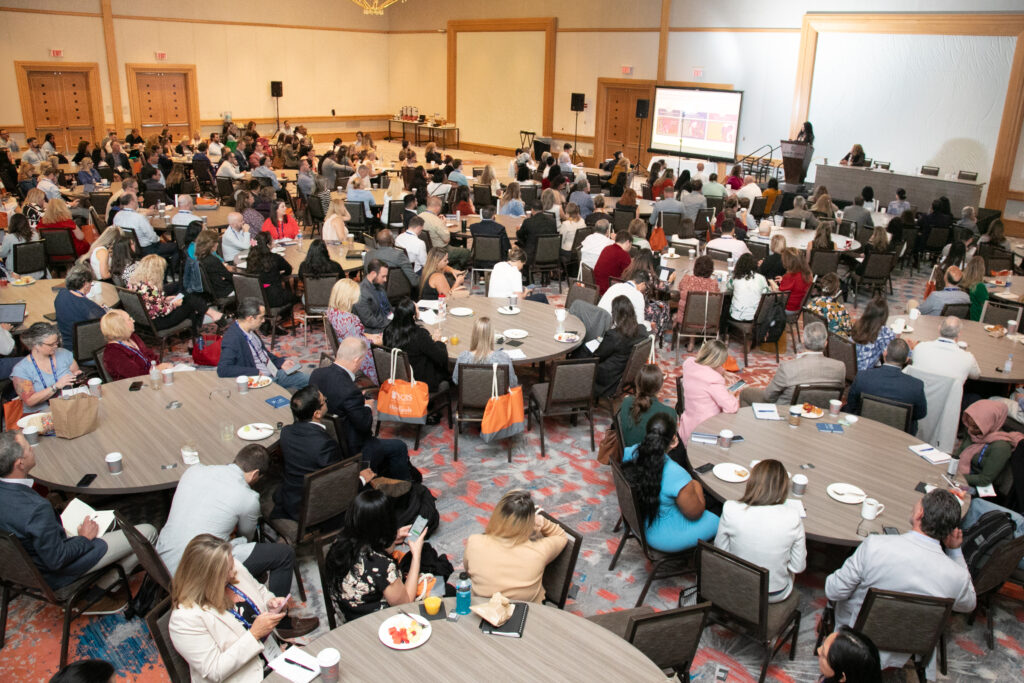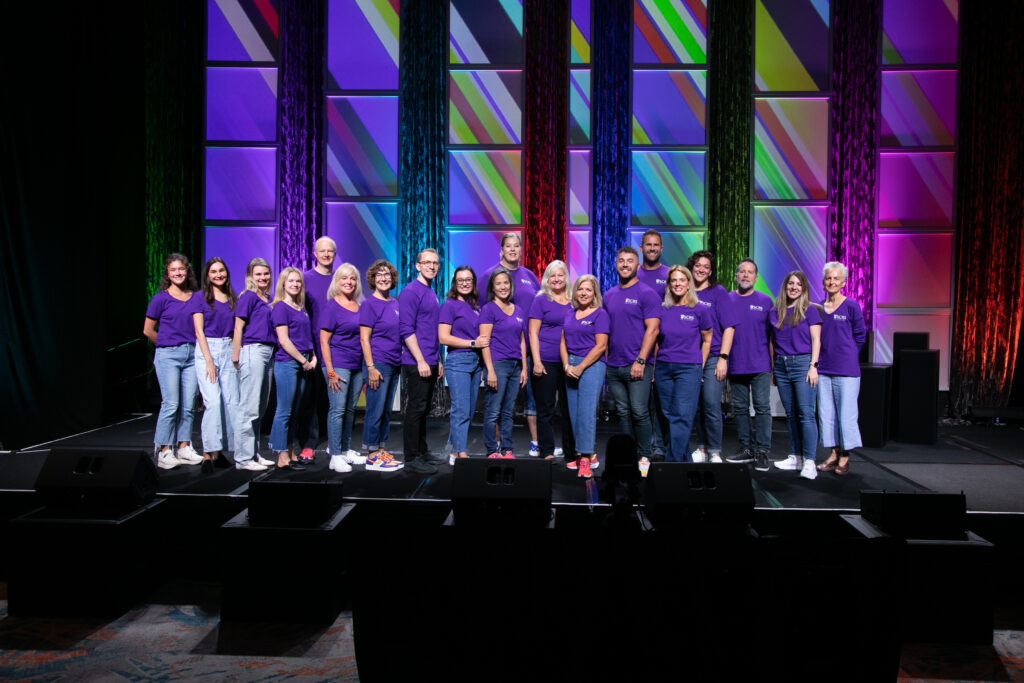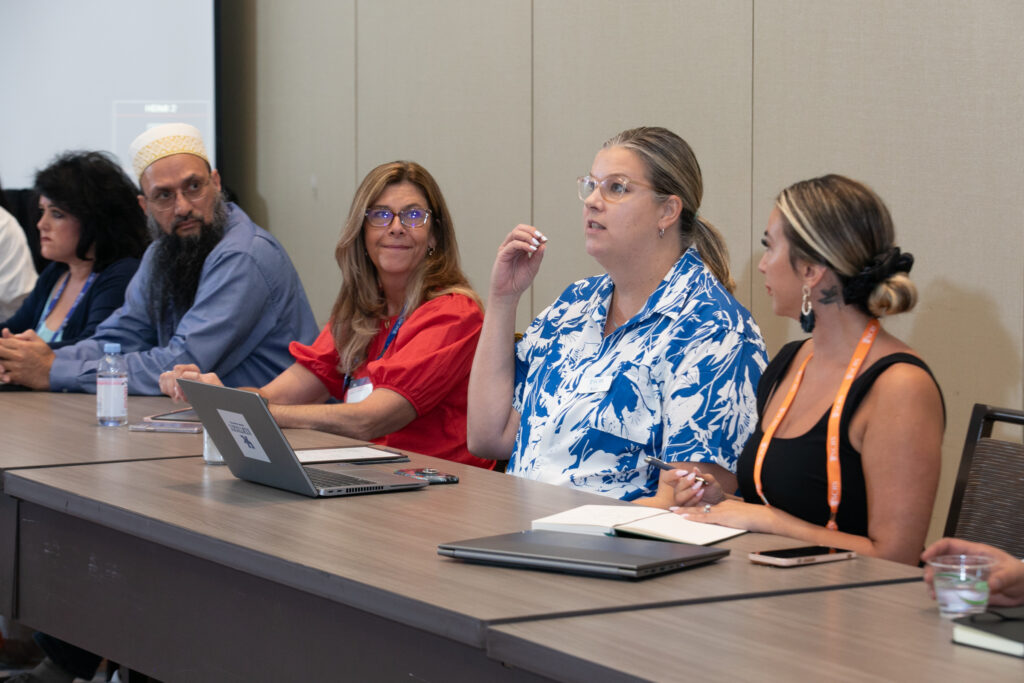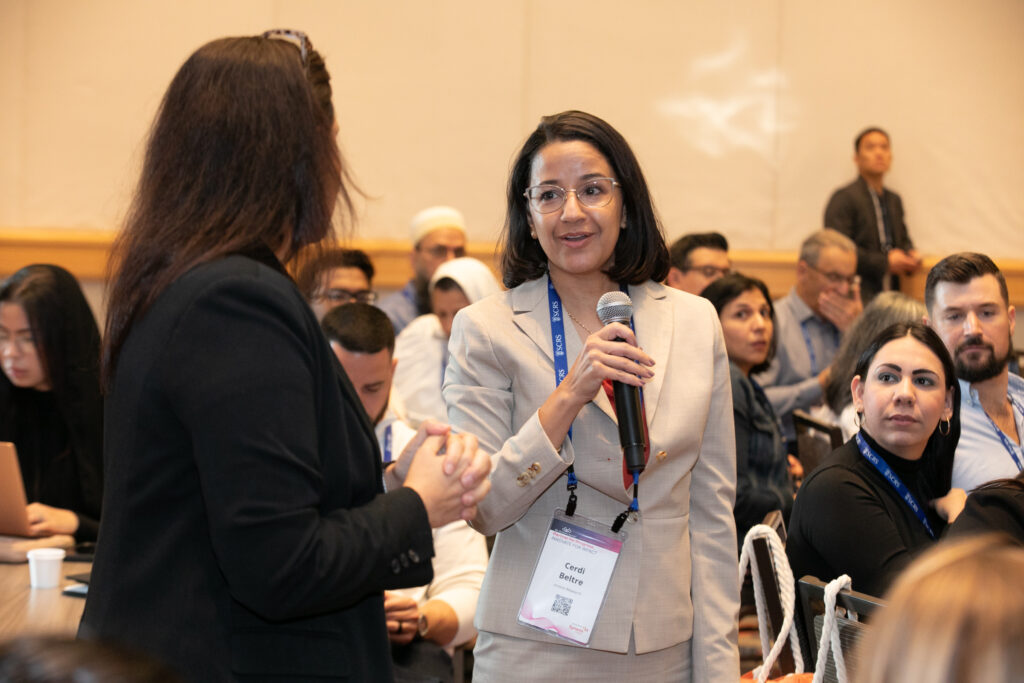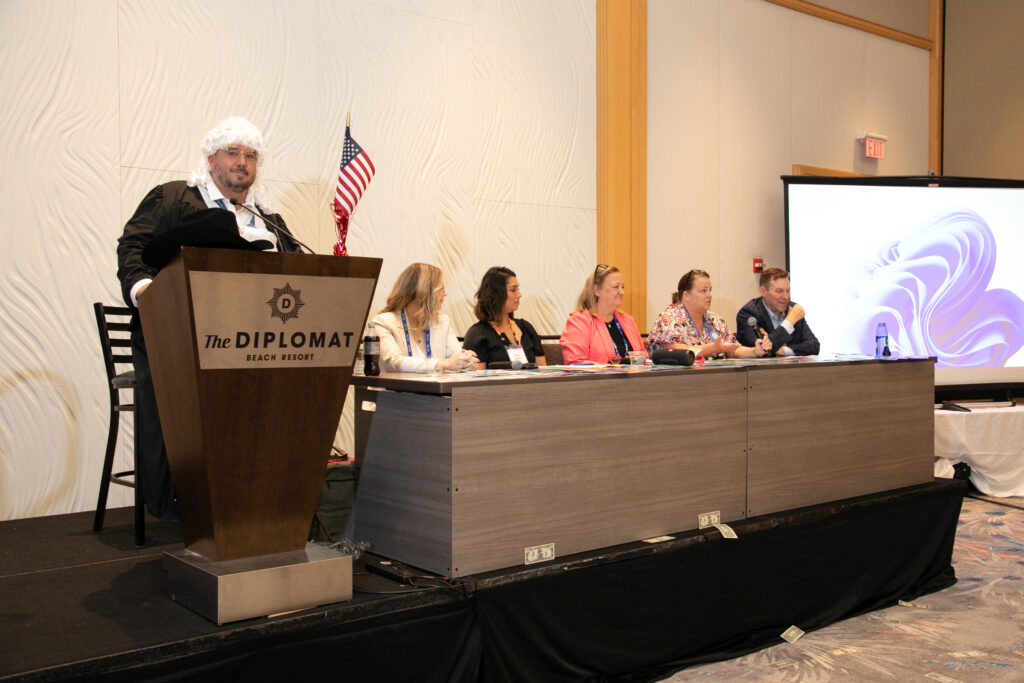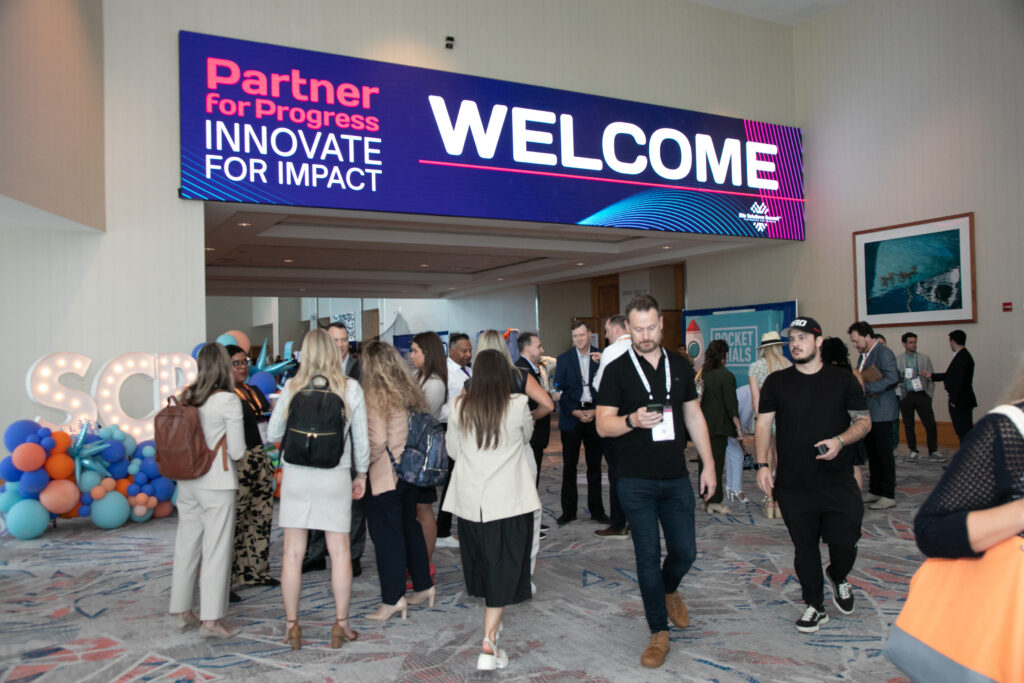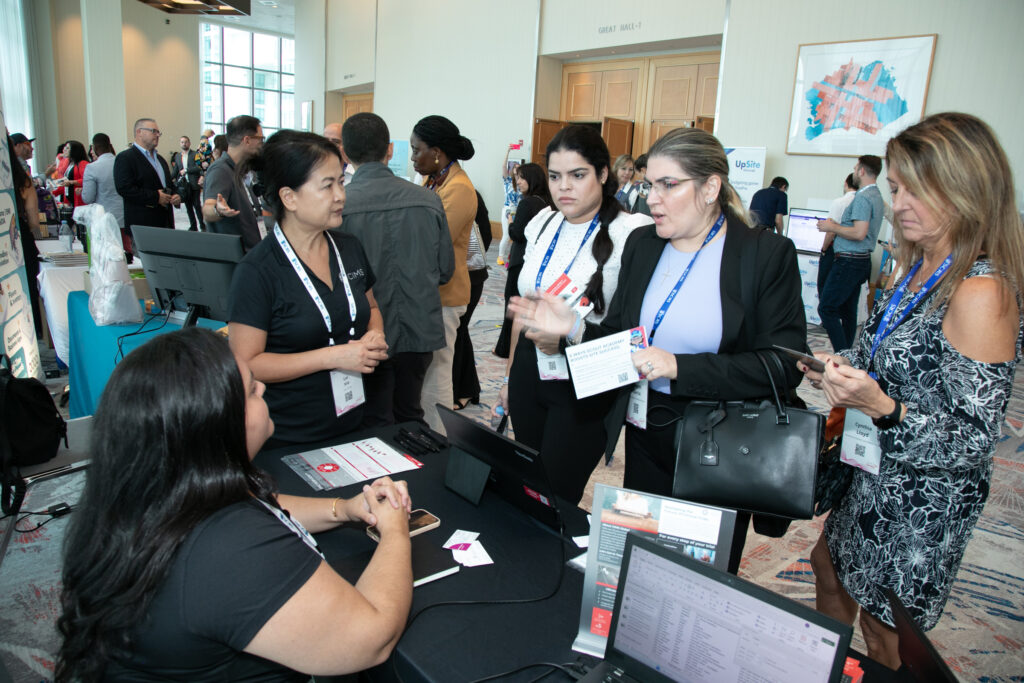Partnering for Progress: Insights from the 2024 Global Site Solutions Summit

The 2024 SCRS Global Site Solutions Summit brought together 1,700 clinical research leaders to explore new approaches to enhance site performance and patient outcomes. The four-day event brought together research sites, sponsors, CROs, and solution providers to foster new insights and partnerships through an in-depth look at real-world challenges in site operations.
The theme for the 2024 Summit – “Partner for Progress, Innovate for Impact” – served as a central focus for our discussions, sharing challenges and opportunities for improving the clinical research ecosystem.
On Wednesday, SCRS hosted a Hidden Costs of Conducting Clinical Trials workshop, a foundational learning experience showcasing strategies for calculating true study costs and negotiating fair budgets with sponsors and CROs.
The Summit officially commenced on Friday with insights from the annual Site Landscape Survey, innovation showcases from Site Spark award finalists, and inspiring stories from patients and sites. On day two, plenary sessions focused on how to transform research for greater inclusivity, followed by additional insights from the Site Landscape Survey. 40+ breakout discussions were hosted on Saturday, covering topics such as business development, patient recruitment, workforce management, regulatory guidance, DEI, legal considerations, and more.
Ken Getz, Director of the Tufts Center for the Study of Drug Development and Research Professor at Tufts University School of Medicine, kicked off the final day of the Summit. Getz highlighted evolving challenges and opportunities in the clinical trial landscape, particularly with rare disease therapies, rising costs, and growing complexity.

Trends, Challenges, and Opportunities
In his keynote presentation, Getz noted several industry trends such as increased layoffs, budget constraints, and global volatility impacting clinical trial startups and overall drug development.
A prominent challenge impacting today’s trials is the complexity of protocols, data volume, and the growing use of multiple data sources. These factors have contributed to longer trial durations, increased patient burden, and higher failure rates in studies—particularly in rare diseases and oncology.
Further complicating the landscape is the increasing customization of trials, driven by small biotech companies and CRO partnerships. This has led to a high volume of site feasibility assessments, resulting in an estimated $350 million spent by sites last year on qualification processes, often without securing study grants.
To address these challenges, Getz identified three key optimization areas: patient engagement, data management, and risk management. By focusing on integration, cross-functional collaboration, and continuous monitoring, there are opportunities to reduce risk, share costs, and better engage critical partners like sites and patients. Additionally, a shift toward shared risk models between sponsors, payers, and patients was suggested as a path forward to meet the increasing complexity of clinical trials.
Getz emphasized the urgent need for the industry to seize opportunities to embed clinical research into patients’ broader healthcare journeys and utilize AI, real-world data, and novel trial designs to enhance data collection and operational efficiency.
Trial Complexity and Timelines
A key obstacle raised throughout the Summit is the complexity of trial protocols, which drives the need for more assessments and specialized site requirements. Additionally, the lack of standardization across portals and systems further complicates the process, creating a fragmented experience for sites. There is a call for greater data interoperability and better integration of systems to simplify site management, but progress remains slow.
From a sponsor perspective, there is sometimes an urgency to “fail fast” in clinical trials, particularly in high-risk phases. Sponsors are often forced to accelerate timelines in response to portfolio risks, which can place sudden, high-pressure demands on sites. This dynamic illustrates the broader issue of miscommunication between sites and sponsors regarding the risks and pressures each party faces. The role of site engagement and relationship management teams was also recognized as critical factor to improve site-sponsor collaboration.
Feasibility
Clinical research sites face overwhelming time demands of feasibility questionnaires and qualification visits. A striking observation was that site staff spend about a week per month on these tasks, diverting valuable time away from supporting trial participants.
Sites are often asked for the same information repeatedly, so it’s imperative that we continue to streamline repetitive processes and invest in better systems to reduce this time burden on sites. Site time spent on feasibility assessments could be streamlined or reduced if sponsors and CROs find ways to utilize existing site data.
Innovation and Technology Integration
Sites are increasingly leveraging technology to improve efficiency. Many sites discussed the adoption of electronic data capture (EDC) systems, telemedicine solutions, and other digital platforms that have streamlined site management and patient interactions. The role of artificial intelligence (AI) and data analytics in predicting patient enrollment trends and improving trial outcomes is also growing substantially.
The use of digital tools to engage patients was a recurring theme. Investing in the latest tech for patient recruitment can enhance study visibility, though it’s imperative to recognize that technology solutions may not suit every study or patient demographic. Understanding patient preferences and tailoring approaches to meet their needs is a key first step. By integrating patient feedback into trial design, we can ensure that studies are patient-friendly and responsive to their concerns.
YPrime’s Aubrey Verna remarked that we’re in a state of “Frankensteined” technology where sites struggle to manage multiple disjointed systems. She pointed out that technology should simplify, not complicate, site workflows. Seamless integrations, such as API solutions, and better partnerships can simplify the user experience for site staff. Further, there is a prominent need to reduce the number of vendors and align preferred vendor lists between sites and sponsors to further minimize bottlenecks.
SCRS reiterated the call for sponsors, CROs and vendors to reduce site technology training requirements by at least 25% in 2025. Training should be “right-sized” to eliminate unnecessary duplication and focus on what is truly essential. This goal can be accomplished by switching to role-based training, deferring training until after protocol startup, allowing for training test-outs, and allowing for training reciprocity among sponsors and vendors.
If the goal is to reduce site burden and improve site operations through unified, user-friendly platforms, it’s imperative to involve sites in technology decision-making, development, and testing. Early engagement with sites during protocol reviews can create alignment and reduce ambiguity with technology-enabled trials. Moreover, technology implementation budgets need to account for indirect costs, such as time away from patient care, and ensure risk mitigation to avoid further burdening sites.
Sites, sponsors, CROs, and vendor partners can work together to improve processes end to end. As always, system and process improvements should be balanced with the need to focus on supporting the people who drive clinical trials forward – sites and patients.
Record Retention
Some sponsors and CROs continue to obligate their sites to retain study records for years or even decades beyond regulatory obligations. Sites have clearly expressed that they do not want to take part in long-term record archiving, and the industry collectively agrees that current budgets are not adequate for long-term storage.
Ironically, the 2024 Site Landscape Survey showed that only 21% of sponsors and CROs feel sites are “very competent” in meeting the demands of long-term electronic record archiving. It’s recommended that sponsors work with their own storage vendors to keep study records, taking this burden off of sites and allowing secure access to files when needed.
Diversity and Inclusion
There is a need for culturally competent recruitment approaches, especially to make trials more accessible among diverse populations. Training site staff on cultural sensitivity and awareness to build trust with different patient communities. To start, sites are encouraged to promote a diversity-first hiring strategy that attracts candidates with a range of skills and backgrounds.
Community outreach funding is also essential for enhancing inclusive research, although it has been challenging to include under traditional marketing budgets. Further, developing long-term partnerships with community organizations that serve underrepresented groups has helped increase research participation and improve trial inclusivity.
Workforce
Although the state of the site workforce has improved compared to prior years, attendees collaborated on ways to bring more site staff into the ecosystem, along with improving training and retention. Proper onboarding and creative benefit structures were highlighted as essential to reducing employee turnover and meeting cultural demands. Creative benefits that align with the cultural and personal needs of employees can further reinforce engagement.
Onboarding and training are vital for ensuring long-term staff engagement and reducing turnover. A well-structured onboarding experience fosters a sense of belonging and enhances performance from the start. Sites should develop thorough onboarding processes with targeted training programs that address specific roles, helping new employees integrate smoothly.
Alison Liddy from IQVIA also emphasized the importance of bringing new investigators into the fold, partnering with sponsors to ensure these sites have the tools they need to succeed, and preventing them from becoming “one-and-done” investigators.
Investigator training and mentorship are crucial for developing the skills needed to lead effective clinical trials, where the guidance of seasoned study coordinators and mentors can help new investigators navigate challenges. Training should balance clinical knowledge with practical business skills, covering essentials such as Good Clinical Practice (GCP) and regulatory processes.
There was a call for sponsors and CROs to invest in new, research-naïve sites by offering infrastructure support and avoiding common pitfalls like underpaying or overwhelming these sites with complex processes. This includes funding investigator training, which increases preparedness and reduces turnover.
Innovating for Impact
Partner for Progress, Innovate for Impact: our hope is that this theme is not just words, but the core of what we achieve together in 2024 and beyond. The connections, ideas, and collaborations we form will drive the progress we are collectively striving for and create a lasting impact on our industry. The work ahead requires working together with evolved purpose, collaboration and, of course, action.
It’s remarkable to think of the progress our industry made together at the Global Site Solutions Summit and the transformations to come. Our collective achievements are possible because of the partnerships we build, the challenges we face, and the solutions we pursue to solve those challenges together. Let this be a reminder that when we unite with purpose, we don’t just progress – we transform. Thank you for your contributions and commitment to making a difference. We hope to see you again soon.


